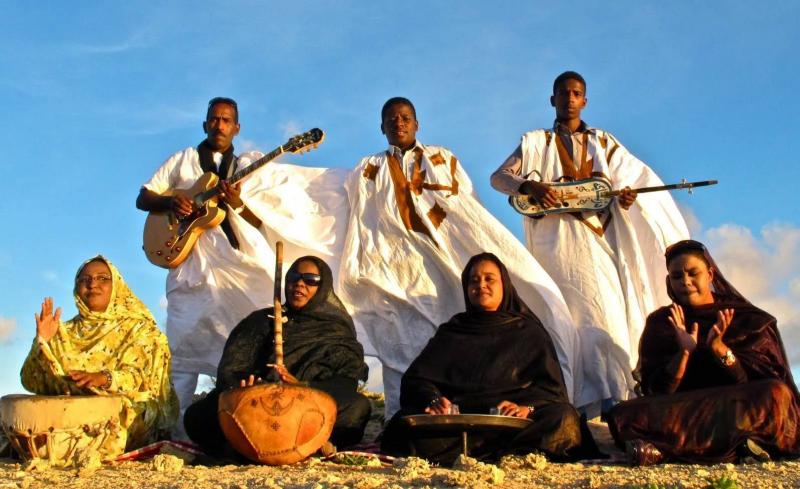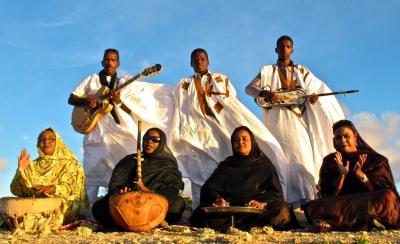Music is a universal language for expressing emotions and feelings. The word "Music" originally comes from the Greeks, where it referred to all arts and knowledge, but later adopted a more specialized meaning. Music serves as a means of communication for the heart, carrying profound meanings in its moments of silence. Hence, music possesses the incredible ability to alter one's mood. It is the art of arranging sounds over time through various elements: melody, harmony, rhythm, and timbre. Music sources vary, as sounds come from beautiful nature, including humans, animals, and birds. The most creative sounds come from human singing because individuals can arrange and modulate their voices as they wish, each having a unique vocal range and tone. Some possess soft and delicate voices, while others have rough and powerful vocals, and some have gentle tones.
Singing is a human production that combines three elements: music, lyrics, and voice. It can be performed solo or collectively, known as a "choir" or "choral." It may also be rendered as a melodic vocal performance without any musical instruments. Among the essential parts of the body that control sound production are the vocal cords, which vibrate when air passes through them.
### Characteristics of Musical Sound
Musical sound has various characteristics and features, the most important of which are:
- Rhythm
- Sweetness
- Ornamentation
- Balance
- Vocal range, including harmonic homogeneity and melody
- Sound quality
- Vitality
### Arabic (Eastern) Music
Arabic music has a distinct character, originating before Islam, and varies from one Arab country to another. Among its types are:
**Eastern Takht**
This is what is referred to as the Arabic orchestra, which includes musical instruments such as the oud, nay, daf, and violin, among others. The term "takht" is of Persian origin, meaning "throne," as musicians would sit above the ground while playing. The takht emerged during the Turkish era in the mid-19th century.
**Raï Music**
This is a global Algerian musical genre prevalent in the Maghreb regions. The term "raï" originally means "opinion" or "seeing." Many singers and musicians used raï to express their political and social views. The singer known as the "King of Raï," Cheb Khaled, is considered a representative of raï music, with famous songs such as "Didi," "Alaash Tilumuni," and "Aisha." Some of Cheb Khaled's songs are traditional pieces modernized in style.
**Popular Music (Chaabi)**
This genre is found in the Maghreb and has roots in Al-Andalus. Some modern instruments were integrated into it, and it is widespread among the simpler populace, using the colloquial language.
**Qasida**
This is a form of Arabic poetry that has long been divided into poetry and prose to this day. The word "qasida" linguistically derives from the root "q-s-d," related to the idea of direction and intention.
**Taqtouqa**
This is an Eastern origin music type that became known in Egypt in the 1940s. One of the most famous taqtouqat is "Ala Baladi Al-Mahboub" by the Arab music diva Umm Kulthum. The taqtouqa form requires a specific type of melody and writing.
**Mawwal**
This is a type of Arabic poetry known for a long time; it is considered one of the traditional vocal forms and relies on improvisation and skill in showcasing musical transitions. A mawval usually begins with the phrase "Ya Lail Ya Ain" to create a sense of harmony and connection with the listeners. Its themes include praise, admonishment, sadness, and love, among others.
**Muwashshah**
This is a newly developed poetic art that differs from traditional Arabic lyrical poetry in various aspects, adhering to specific technical rules, and using colloquial or foreign language in its execution, thus establishing a strong connection to singing. It is named "muwashshah" for its elegance and embellishment, likening it to a woman's shawl. The plural is "muwashshahat," as its diverse rhymes follow a unique order, giving it a pleasant musical sound. The verses ornamented by rhymes are perceived as adorned with jewels and pearls. Muwashshahat appeared in Islamic Al-Andalus and provided a different style and form of poetry that expanded beyond Al-Andalus to other Arab countries like Egypt, with Andalusian muwashshahat not relying on a single rhyme principle, often ending with colloquial phrases and varying in types based on rhythm and rhymes.
### Types of Musical Instruments
Musical instruments are classified as follows:
**Wind Instruments**
These instruments produce musical sound by blowing air into them. Some of the most famous are:
- **Harmonica**: A popular wind instrument often heard in folk music, dance, and hip-hop.
- **Trumpet**: A brass instrument extensively used in jazz and classical music.
- **Nay**: One of the prominent names of ancient Arabic musical instruments made from wild cane.
**String Instruments**
These are musical instruments that consist of strings stretched between two points, producing sound when they vibrate. Some of the most famous are:
- **Oud**: A pear-shaped string instrument with a deep body, often used in Arabic, Persian, and Kurdish music.
- **Violin**: One of the most renowned string instruments used in classical music, consisting of four strings.
- **Sitar**: A notable Indian musical instrument with three strings.
- **Cello**: A member of the violin family with four strings but larger in size, considered one of the prominent Western musical instruments.
- **Guitar**: An instrument played using fingers or a small plastic piece called a pick, differing based on its type, including classical, acoustic, and electric guitars.
**Percussion Instruments**
These produce musical sound through striking and vibrating. Some of the most famous examples are:
- **Daf or Riq**: One of the oldest Eastern musical instruments, consisting of a thin skin surrounded by a frame.
- **Cymbals**: A Western brass musical instrument consisting of two disks, one held in the right hand and the other in the left.
Several studies have shown that teaching music at a young age stimulates a child's brain in various ways, helping improve communication skills, visual skills, and speech skills. One study focused on children aged four to six years old, subjecting them to musical training in rhythm, sound, melody, and basic musical concepts for one month. This study revealed that music enhanced children's ability to understand words and explain their meanings.




